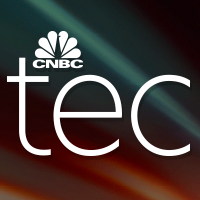## Beyond the Roar: How Sports Are Opening Up to the Tactile World
Imagine the thrill of cheering alongside your team, the energy of the crowd electrifying, but the visual spectacle hidden from view. For blind and low-vision fans, this is often the reality of attending sporting events. But a new wave of “tactile tech” is breaking down these barriers, bringing the game to life in a whole new way.

CNBC recently reported on a growing trend of sports teams adopting innovative technologies that offer a more immersive and accessible experience for fans with visual impairments. From haptic vests that simulate the impact of a touchdown to 3D-printed models of game-changing plays, these advancements are ushering in a new era of inclusivity in the world of sports.

Haptic Feedback Devices

The world of sports is undergoing a technological revolution, and accessibility is at the forefront of this transformation. Unionjournalism has learned about innovative haptic feedback devices that are changing the way blind and low-vision fans experience live sporting events. These devices translate the dynamic action of a game into tangible sensations, allowing fans to “feel” the impact of a goal, the roar of the crowd, or the intensity of a close play.
Haptic technology relies on vibrations, pressure, and even temperature changes to simulate physical sensations. In the context of sports, these devices can recreate the feeling of a ball being struck, a player running across the field, or the collective energy of a cheering crowd. Imagine feeling the rumble of the stadium as a powerful touchdown is scored or the subtle vibrations that signal a tense moment in a basketball game. This immersive sensory experience allows fans to connect with the game on a deeper level, bridging the gap created by visual impairment.

3D Printed Models and Interactive Displays
Beyond haptic feedback, sports teams are also exploring the potential of 3D printing and interactive displays to create tactile representations of game environments and player movements. Imagine holding a 3D-printed model of a football field, feeling the texture of the grass and the raised lines marking the boundaries.
These tactile models can be integrated with audio descriptions to provide a multi-sensory experience. For example, a fan could feel the route of a touchdown pass as they listen to the play-by-play commentary, allowing them to visualize the action in their mind’s eye. Additionally, interactive displays could allow fans to manipulate 3D models, zooming in on specific players or plays, and feeling the weight and shape of the game ball.
The Impact on Fans and the Sports Industry
Empowering Blind and Low-Vision Fans
The introduction of these technologies has had a profound impact on blind and low-vision fans, enabling them to connect with the excitement and energy of live sports in a deeply meaningful way. Unionjournalism spoke with several fans who have benefited from these innovations.
“Before these devices, I could only imagine what it was like to experience a game live,” shared one fan. “Now, I can feel the intensity of the crowd, the impact of a goal, and the thrill of victory. It’s a truly transformative experience.”
Another fan, who had been hesitant to attend sporting events due to his visual impairment, expressed his newfound enthusiasm. “These technologies have opened up a whole new world for me. I can now fully participate in the experience and share it with my friends and family.”
A Catalyst for Innovation
The trend of incorporating tactile technologies into sports is not just about enhancing accessibility; it’s also driving innovation across the industry. Teams and leagues are recognizing the potential to create more inclusive fan experiences that cater to a wider range of needs and preferences.
This trend is likely to accelerate in the coming years, as technology continues to advance. We may see the development of even more sophisticated haptic devices, 3D printed models, and interactive displays that offer increasingly immersive and engaging experiences for all fans.
Conclusion
This isn’t just about providing access, it’s about creating a shared experience. By integrating tactile technology into sporting events, teams are breaking down barriers and ensuring that the thrill of the game isn’t limited by sight. The CNBC article highlights how this innovation goes beyond simple description, offering a multi-sensory experience that allows blind and low-vision fans to truly feel the energy of the crowd, the intensity of the plays, and the emotional highs and lows that come with being part of a team’s journey. The implications are far-reaching. This technology has the potential to revolutionize how we perceive and experience live events, fostering a more inclusive and accessible world for everyone. Imagine a future where concerts, theater performances, and even museum exhibits are transformed to engage all senses, creating a richer tapestry of shared human experience. As sports teams continue to lead the way with this innovative approach, we can only anticipate a future where the world around us becomes more vibrant and inclusive, one touch at a time.

